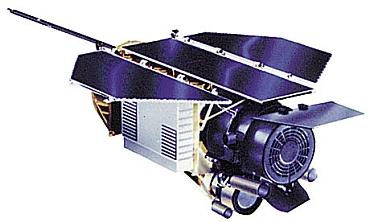 | « Back to article | Print this article |
In PHOTOS: Doomed satellite plunges to earth, its fate unknown
A bus-sized defunct German satellite on Sunday plunged to Earth after languishing in a dead orbit for more than a decade, but space officials have no idea yet about where it fell.
According to the German Aerospace Centre, the 2.7-tonne Roentgen Satellite, or ROSAT, slammed into Earth's atmosphere sometime between 01:45 GMT (6:15 IST) and 02:15 GMT (6:45 IST) on Sunday, but scientists are yet to confirm where exactly the doomed satellite fell on Earth.
"There is currently no confirmation if pieces of debris have reached Earth's surface," German aerospace officials were quoted as saying by Space.com.'No confirmation if pieces of debris have reached Earth'
Scientists were no longer able to communicate with the dead satellite and it must have travelled some 20,000km in the final 30 minutes before entering the atmosphere, they said.
While the 21-year-old satellite broke apart as it entered Earth's atmosphere, the officials said that up to 30 pieces weighing 1.9 tonnes, consisting some of its heat-resistant mirrors and ceramic parts, could have survived the fiery trip and reached the surface of the planet.
Based on ROSAT's orbital path, these fragments could be scattered along a swath of the planet about 80 km wide, the officials have said.
Satellite launched into orbit in 1990
The satellite, which weighs 2,426 kg, was launched into orbit in 1990 to study X-ray radiation from stars, comets, supernovas, nebulas and black holes, among other things.
It was originally designed for an 18-month mission, but it far outlived its projected lifespan. In 1998, its star tracker failed, forcing its X-ray sensors to pointed directly at the sun. This caused irreparable damage to the satellite, and it was officially decommissioned in February 1999.
ROSAT, second satellite to fall from space in a month
ROSAT was the second satellite to fall uncontrolled from space within a month. On September 24, a 6.5-tonne, NASA climate satellite, called the Upper Atmosphere Research Satellite, plummeted into the Pacific Ocean.
The event sparked a media frenzy around the world, and some pranksters even seized the opportunity to create hoax videos and images of the satellite's fall.



